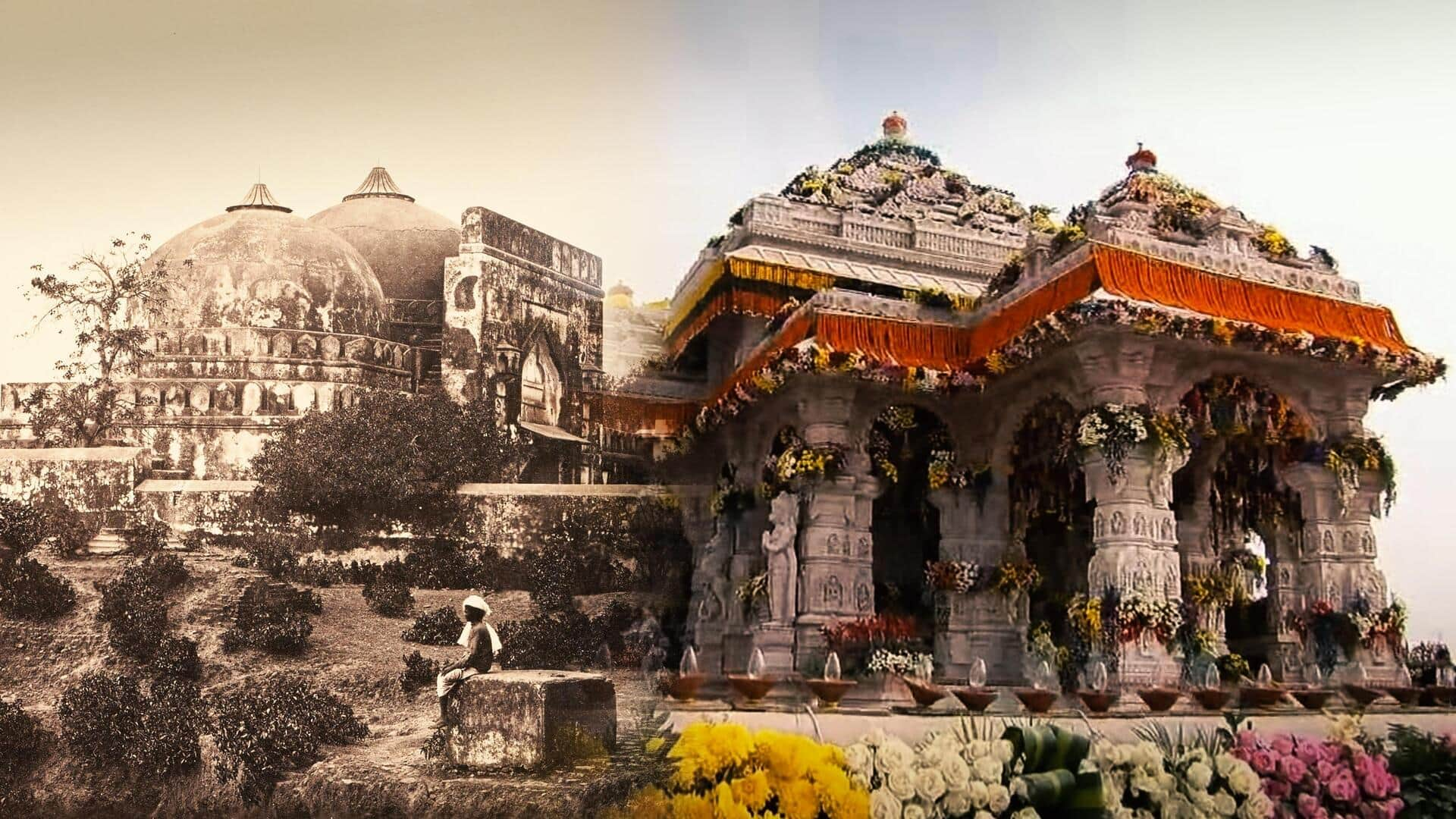
Explained: 500-year timeline of Ram Mandir in Ayodhya
What's the story
Prime Minister Narendra Modi inaugurated the Ram Mandir in Ayodhya on Monday, bringing closure to a 500-year-old dispute. The temple's consecration came after a lengthy history of legal battles, political involvement, and communal tensions at the site where the Babri Masjid once stood. Here's a recap of how the 500 years culminated in the construction of the Ram Mandir.
Details
Origins of dispute: Babri Masjid, early claims
The beginning of the Ram Temple movement lies in the construction of the Babri Masjid in 1528 by Mir Baqi, a commander of Mughal emperor Babur. It was believed that the mosque was constructed on the ruins of a Hindu temple. In 1858, Nihang Sikhs under Fakir Singh Khalsa attempted to claim Babri Masjid as Lord Ram's birthplace. This was mentioned in the Supreme Court's 2019 ruling.
What Next?
Legal battles, public mobilization
In 1885, Raghubar Das, a priest of the Nirmohi Akhara, filed the initial legal suit, requesting permission to construct a temple on the outer courtyard of the mosque. The British administration fenced the site, designating separate areas for Hindus and Muslims. On December 22, 1949, 'Ram Lalla' idols were placed inside the mosque, fueling religious sentiments and triggering legal battles over ownership. Hindus argued the idols "appeared" in the mosque, leading to the first court appearance of the property dispute.
Insights
Babri Masjid demolition
In 1986, during the Rajiv Gandhi-led government, Babri Masjid's locks were opened. Also, Hindus were allowed to worship inside. This decision sparked tensions and gave rise to the Ram Janmabhoomi agitation. In 1992, the mosque was demolished by karsevaks (Hindu activists), leading to communal riots across India. The PV Narasimha Rao-led government's acquisition of the disputed area faced a challenge by Dr. Ismail Faruqui. This led to a 1994 Supreme Court ruling that upheld the acquisition, strengthening the state's role.
Details
Allahabad High Court hearing, ASI excavation
The legal battle reached the Allahabad High Court which began hearing the title case in 2002. The Archaeological Survey of India (ASI) performed excavations, claiming to have found traces of a Hindu temple beneath the mosque. The 2010 verdict of the Allahabad High Court tried to resolve the dispute by dividing the land among Hindus, Muslims, and the Nirmohi Akhara. But, the decision faced appeals and more legal challenges.
Facts
SC's historic judgment, Ram Mandir construction
After years of hearings, the Supreme Court finally granted the entire disputed land to Hindus in 2019 for the construction of the Ram Mandir. It allocated an alternate site for a mosque. PM Modi laid the foundation stone for the temple on August 5, 2020. The formation of the Shri Ram Janmabhoomi Teerth Kshetra Trust paved the way for the temple's construction.